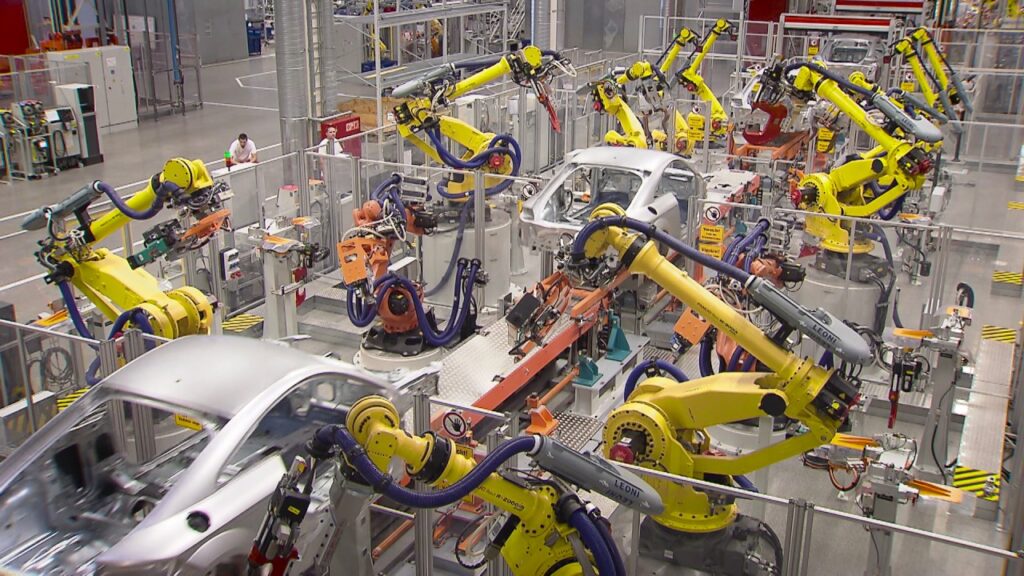**Robotic Process Automation: Revolutionizing Efficiency and Flexibility**
In today’s fast-paced world, businesses are constantly striving for greater efficiency and flexibility. Manual and repetitive tasks, although necessary, can often become a hurdle in achieving these goals. However, with the advent of Robotic Process Automation (RPA), organizations can automate these cumbersome processes, allowing for improved productivity and reduced human error. In this article, we will delve into the world of RPA, exploring how it works and the myriad benefits it brings to businesses across various industries.
Robotic Process Automation, as the name suggests, involves the use of software robots or bots to carry out repetitive tasks. These bots mimic human behavior by interacting with computer systems, performing tasks such as data entry, calculations, report generation, and more. By automating these processes, RPA eliminates the need for human intervention, freeing up valuable time and resources that can be directed towards more critical activities.
One may wonder, how does Robotic Process Automation actually work? Well, RPA operates by utilizing a combination of user interfaces and application programming interfaces (APIs) to interact with different systems and applications. These bots are trained to perform tasks in a manner similar to humans, navigating through screens, entering data, and even making decisions based on predefined rules. RPA can be implemented on both desktop applications and web-based platforms, making it versatile and adaptable to various business needs.
One of the key advantages of RPA is its ability to enhance efficiency within an organization. Repetitive tasks that were once time-consuming and prone to errors can now be completed at lightning speed and with utmost accuracy. This allows employees to focus on more value-added activities that require human intelligence, creativity, and critical thinking. By delegating mundane tasks to RPA, businesses can significantly increase their operational efficiency, ultimately leading to cost savings and improved customer satisfaction.
Additionally, RPA offers a level of scalability that traditional methods often struggle to achieve. As businesses grow and expand, the volume of repetitive tasks tends to increase exponentially. With RPA, organizations can easily scale their automation efforts without the need to hire additional manpower. Whether it’s processing large volumes of data, conducting financial reconciliations, or managing customer inquiries, these bots can handle the workload efficiently, ensuring smooth operations even during peak times.
Furthermore, RPA promotes standardization and compliance within businesses. By automating processes, companies can ensure that tasks are performed consistently and in accordance with predefined rules and regulations. This minimizes human errors and reduces the risk of non-compliance, which can have severe consequences in heavily regulated industries such as finance and healthcare. RPA provides a level of accuracy and auditability that is essential in maintaining regulatory compliance and meeting industry standards.
In recent years, RPA has gained immense popularity across various industries, and its impact is far-reaching. Major players in sectors such as banking, insurance, healthcare, and manufacturing have embraced this technology to streamline their operations and stay ahead of the competition. RPA has proven to be a game-changer, not only in terms of operational efficiency but also in enhancing customer experiences. By automating back-office processes, businesses can reduce turnaround times, improve accuracy, and ultimately provide a seamless and satisfying experience to their customers.
However, it’s important to note that while RPA offers a multitude of benefits, it is not a one-size-fits-all solution. The successful implementation of RPA requires careful planning, analysis, and collaboration between various stakeholders. It is crucial to identify the right processes for automation and assess the potential impact on the workforce. RPA should be seen as a tool that complements human capabilities rather than replacing them entirely. With proper training and upskilling programs, employees can transition into more strategic roles, leveraging their expertise alongside the power of automation to drive business growth.
In conclusion, Robotic Process Automation is revolutionizing the way businesses operate by automating repetitive and manual tasks. It offers a combination of efficiency, scalability, compliance, and improved customer experiences. By embracing RPA, organizations can unlock their true potential, allowing employees to focus on value-added activities and stay one step ahead in this digital age. As businesses continue to evolve, it is becoming increasingly evident that RPA is not just a luxury, but a necessity for sustainable growth. So, why not join the RPA revolution and unlock the true potential of your organization?
Industrial Robot
Understanding the Mechanics of Robotic Process Automation: Simplifying Complex Tasks Efficiently


